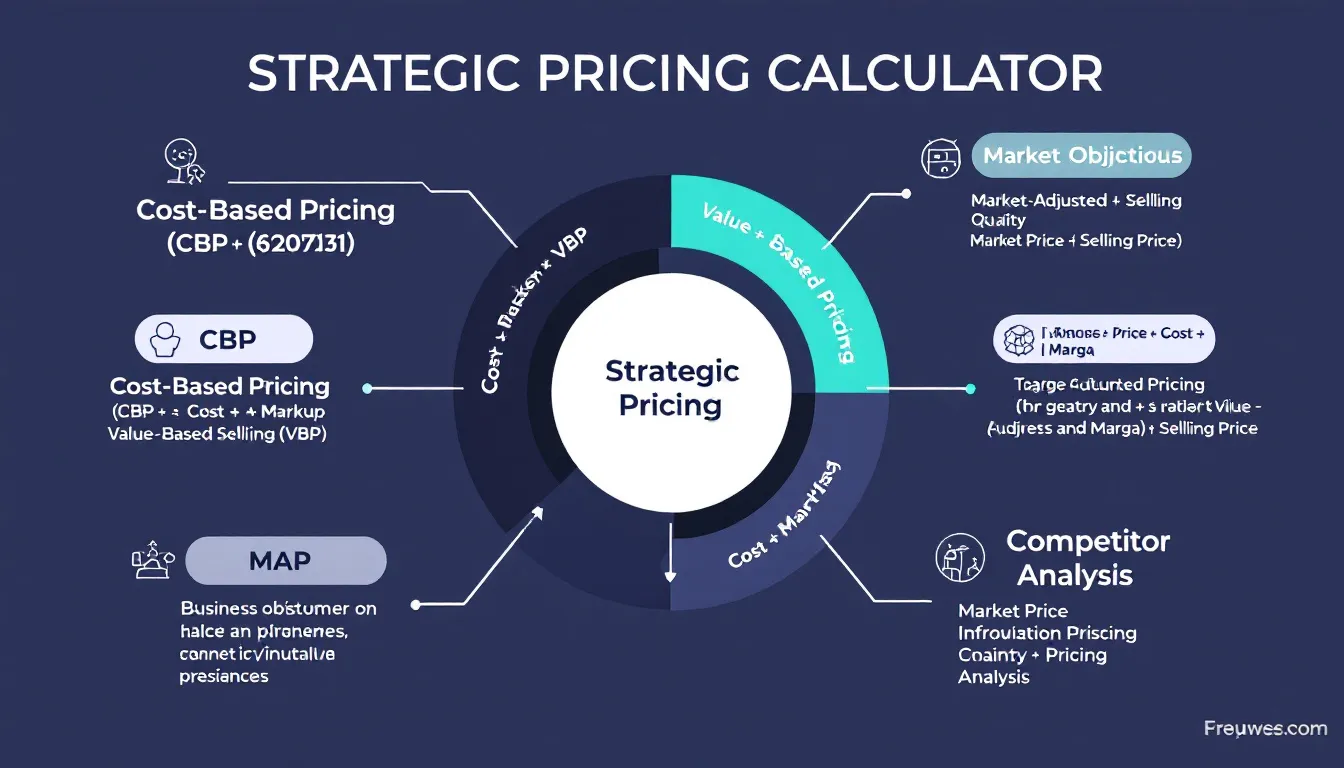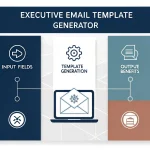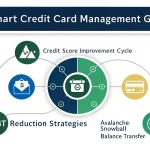Is this tool helpful?
How to Use the Strategic Pricing Calculator Effectively
To generate a precise and actionable pricing strategy with this tool, carefully fill out each input field with relevant details. Below are clear directions and example inputs to guide you.
-
Product or Service Being Priced: Enter a clear and concise description of your offering. Examples:
- “Custom Mobile App Development for Retail Businesses”
- “Organic Skincare Subscription Box”
-
Key Business Objectives and Goals: Outline your main business targets. Examples:
- “Expand customer base by 20% in the next year while maintaining a 35% profit margin”
- “Increase brand awareness in eco-friendly markets and boost repeat sales by 15%”
-
Target Customer Segments: Explain who your ideal customers are. Examples:
- “Independent bookstore owners in urban areas with annual revenues above $500K”
- “Health-conscious millennials ages 25-35 interested in sustainable living”
-
Customer Behavior Patterns and Preferences: Share insights about how customers act or what they value. Examples:
- “Value speed and convenience, often make purchases via mobile devices”
- “Willing to pay premium for ethically sourced products, prefer detailed product info”
-
Information About Competitor Pricing: (Optional) Provide details of your competitor’s pricing. Example:
- “Competitor B offers standard packages at $150/month with annual contracts”
-
Details About Costs and Margins: (Optional) Share your current costs and desired profit margins. Example:
- “Manufacturing cost per unit $30, aiming for 50% gross margin”
Introduction to the Strategic Pricing Calculator
This Strategic Pricing Calculator helps you create pricing models based on real market data, customer insights, and your specific business goals. It integrates value-based pricing, competitive pricing analysis, and customer behavior to develop rates that maximize revenue while aligning with your strategic objectives.
By using this tool, you can make informed pricing decisions that reflect the true value your product or service delivers, position yourself effectively against competitors, and meet your target customers’ expectations.
Key Benefits of the Pricing Calculator
- Align Pricing and Business Goals: Connect your pricing with measurable business outcomes.
- Understand Market Position: Account for competitor prices and market trends.
- Focus on Customer Value: Set prices reflecting what customers are willing to pay.
- Optimize Revenue: Balance volume and margin through data-driven strategies.
- Reduce Pricing Risks: Minimize errors by systematically analyzing your inputs.
Practical Use and Example Calculations
Because this tool processes your inputs via its API, you receive customized pricing strategies without needing manual calculations. However, it applies well-known pricing formulas behind the scenes, such as:
Value-Based Pricing
The price is linked directly to the value perceived by customers:
$$\text{Value-Based Price} = \text{Perceived Customer Value} \times \text{Value Capture Index}$$Market-Adjusted Pricing
Prices are adjusted based on market conditions and competitor pricing:
$$\text{Market-Adjusted Price} = \text{Base Price} \times (1 + \text{Market Factor})$$Price Elasticity Impact
The tool factors in customer demand sensitivity to pricing changes:
$$\text{Price Elasticity Impact} = \frac{\Delta \text{Quantity}}{\Delta \text{Price}} \times \frac{\text{Price}}{\text{Quantity}}$$Example Use Case: SaaS Market Entry
- The competitive pricing in the SaaS market ranges from $80 to $150 per user per month.
- The target segment is startups with 10-100 employees looking for scalable CRM solutions.
- The value proposition offers a 25% boost in sales efficiency.
Based on these inputs, the tool might suggest an initial penetration price calculated as:
$$\text{Initial Price} = \text{Competitor Average} \times 0.75$$$$\text{Initial Price} = \$115 \times 0.75 = \$86.25\,/\,\text{user/month}$$Example Use Case: Premium Consulting Services
- A consulting service delivers $750,000 in annual value to clients through digital transformation.
- The typical engagement lasts 8 months with phased deliverables.
The recommended consulting fee would use value capture as follows:
$$\text{Consulting Fee} = \text{Value Created} \times \text{Value Capture Rate} \times \text{Duration Factor}$$$$\text{Consulting Fee} = \$750,000 \times 0.12 \times \frac{8}{12} = \$60,000$$Frequently Asked Questions About Pricing Strategy
What details should I include when describing my business objectives?
Provide clear, measurable goals like revenue targets, customer growth rates, profit margins, and market share ambitions. Consider both immediate and long-term objectives for stronger alignment.
How detailed should I be when defining target customers?
Include demographics, buying habits, motivations, geographic location, and pain points. Detailed descriptions help the tool generate more accurate pricing strategies.
Can I use the tool for multiple products or services?
Yes, submit separate entries for each product or service line to account for individual market conditions and customer segments.
How often should I revisit my pricing strategy?
Review pricing quarterly or when you notice major changes in competitors, customer behavior, or cost structures.
What competitors’ pricing information should I include?
Focus on direct competitors and similar offerings within your target customer segment. Include pricing tiers, discounts, and contract terms when possible.
Advanced Pricing Considerations Included
Dynamic Pricing Factors
The calculator adjusts pricing with market demand and seasonal trends using:
$$\text{Dynamic Price} = \text{Base Price} \times (1 + \text{Seasonal Factor}) \times (1 + \text{Demand Multiplier})$$Market Penetration Pricing
For new products entering competitive markets, the tool applies:
$$\text{Penetration Price} = \text{Market Average} \times (1 – \text{Penetration Factor}) \times \text{Sustainability Index}$$Value-Based Pricing Components
The tool calculates customer value as the sum of:
$$\text{Customer Value} = \text{Cost Savings} + \text{Revenue Impact} + \text{Strategic Benefits}$$Use this comprehensive data to set prices that reflect your product’s true worth and market demand while supporting your business strategy and customer expectations.
Important Disclaimer
The calculations, results, and content provided by our tools are not guaranteed to be accurate, complete, or reliable. Users are responsible for verifying and interpreting the results. Our content and tools may contain errors, biases, or inconsistencies. Do not enter personal data, sensitive information, or personally identifiable information in our web forms or tools. Such data entry violates our terms of service and may result in unauthorized disclosure to third parties. We reserve the right to save inputs and outputs from our tools for the purposes of error debugging, bias identification, and performance improvement. External companies providing AI models used in our tools may also save and process data in accordance with their own policies. By using our tools, you consent to this data collection and processing. We reserve the right to limit the usage of our tools based on current usability factors.







